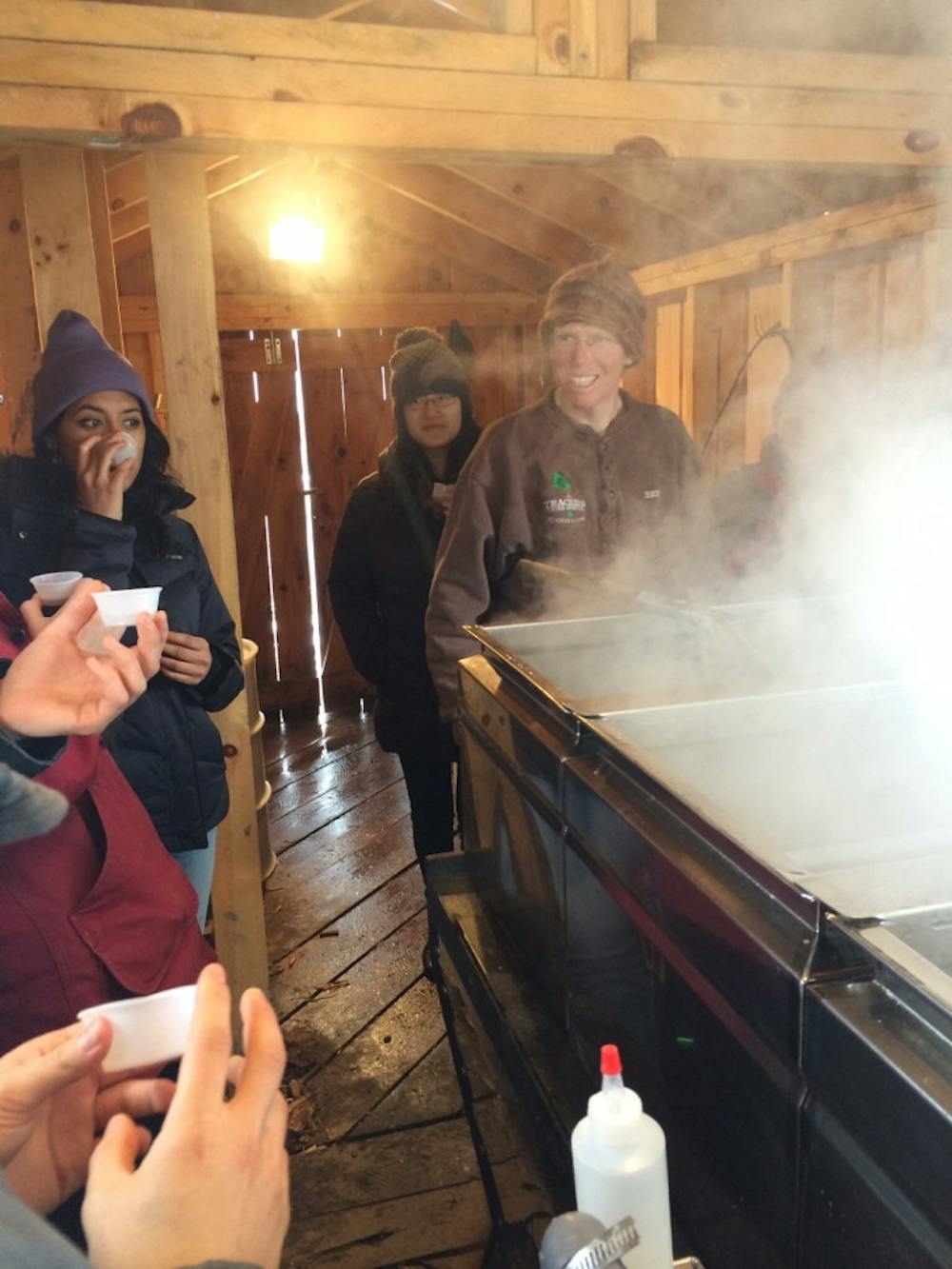Spring thaw marks the start of maple syrup season in Vermont. Across the state, trees will be tapped, sap will be boiled, and pancakes will be doused in fresh syrup to mark the beginning of spring.
Vermont is known as the maple capital of America with 1500 sugarhouses producing 40 percent of the nation’s maple syrup, according to the Vermont Maple Sugar Makers’ Association.
“Vermont is able to produce a high quantity of syrup due to the high concentration of sugar maples in the area,” farmer Ben Freund from Open View Farm said.
Located in New Haven, Open View Farm produces maple syrup on a 180-acre plot with 1400 maple trees.
“I started out with one tree in my grandma’s backyard, and it grew from there,” Freund said.
Freund boils maple sap in a wood cabin located behind his barn.
“This is a pretty small operation. Some days you’re not able to see because it gets so steamy [from the boiling]. If it’s warmer out, it will be raining in here, because of all the condensation” Freund told the group.
After tapping the trees and collecting the sap, Freund uses a reverse osmosis system to remove water from the sap and increase the sugar concentration.
“The reverse osmosis happens in the shop. We have a little room in there that is heated so the sap can’t freeze. One day we hope to have everything in one building,” Freund said, pointing to the smaller structure.
Freund then boils the sap in an evaporator to remove more water. Metal pans sit atop an arch or firebox, and the wood fueled fire evaporates water from the bubbling sap to create sweet concentrated syrup.
“The concentrate will be running at 10 percent sugar content [when put into the evaporator]. Some big commercial producers will concentrate up to 18 percent to 22 percent, which is great on fuel because the concentrate spends less time on the arch, but you lose flavor,” Freund said.
The evaporator finally reaches a temperature around 220 °F creating a syrup with about 66 percent sugar content and a very steamy room. “The significance of the temperature is the density of the syrup,” Freund explained.
The outside temperature also plays a role in the maple sugaring process. The optimal temperature is between 20° F to 40°F, making March and April the best time of year for sugarhouses. During this time of year, the nights are cool and the days are warm, making the optimal conditions for sap to run from the trees.
“The cold weather creates pressure, but the thaw allows the sap to run,” Freund said, talking about the ideal temperature conditions.
To celebrate the season, the Vermont Maple Sugar Makers’ Association sponsored the statewide Maple Open House Weekend from March 28 to 29. Sugarhouses across Vermont opened to the public for tours and syrup tastings.
“Sugar makers register and get their sugar houses posted. People can come, see what’s going on, and have some syrup,” Freund said of this annual weekend event.
A successful syrup season is no guarantee, as sugar makers must face the challenges of changing weather year to year. Due to the cold front that has dominated Vermont’s winter and early spring, many sugar makers have gotten a late start.
Fred Boyden from Boyden Farm in Cambridge Vermont told the Burlington Free Press, “This year has definitely been a little different; we’ve only sugared a couple times since the beginning of the season.”
Despite the difficulties and variability of the trade, maple syrup remains a staple of Vermont culture and continues to be a growing industry.
“We are seeing people tapping a sugarbush who have never sugared before,” Matt Gordon, executive director of the Vermont Maple Sugar Makers’ Association said in a press release. Many people who may not rely on maple sugaring for their income choose to tap a sugarbush (a group of sugar maple trees) for their own use.
When Freund had fully boiled and filtered the sap, warm maple syrup was ready for the tasting and a sugary sweet steam billowed out of the cabin into April’s fresh spring air.
Maple Season Comes to Vermont Late This Year

Comments



